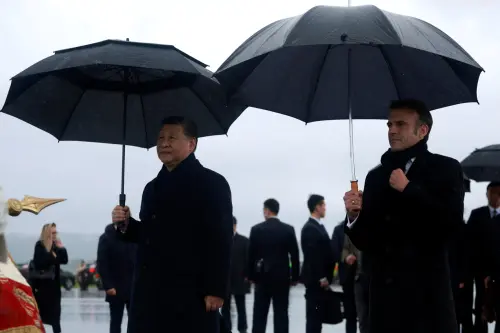ASEAN’s repetitive failure in the South China Sea matters
The controversial China-ASEAN Summit in Kunming on June 16th cast a shadow on the Association of Southeast Asian Nations’ (ASEAN) unity, centrality, and relevance. This is not the first time that this group of 10 has been tested in its interaction with China. From the ‘signature’ failure of the 2012 Cambodian chairmanship of ASEAN to the more recent four-point consensus, in all of those cases, the South China Sea disputes were the key point of pressure, whether mentioned or explicitly omitted.
While there is a growing tendency to criticize and even discredit ASEAN as a whole, I argue that there is a need to have a more granular look at the intra-ASEAN dynamics. The need to keep ASEAN relevant, it seems, is better understood among some members than others. Vietnam emerges as one of the increasingly important members who may have potential in reinvigorating the association.
There are a number of reasons why at this junction of time, Vietnam’s position has become more critical. First of all, the disputes in the South China Sea—a thorn in regional unity and stability—invoke different interests from different actors. Vietnam is one of the most active claimants. It is also a proponent of peaceful and rule-based dispute resolution and has consistently emphasized ASEAN’s central role in facilitating regional dispute management, and hence supports the association’s centrality.
Through the maritime disputes Vietnam emerges as “the most capable and determined Southeast Asian state to challenge China’s claims in the South China Sea,” even though it was the Philippines that has pursued international legal measures.
As the region’s geopolitics shift, the Vietnamese role in determining the security play-out in the South China Sea is growing. Because of national security interests and an immediate sense of threat from China, Hanoi is even more concerned than, e.g., Manila about the implications of a more divided region.
Second of all, while Southeast Asia has in recent years experienced a wave of relatively turbulent political developments, Thailand, Malaysia, and Myanmar have been more preoccupied with domestic politics at the expense of regional matters. The generational change of leaders favoring anti-elitist political outsiders in the region’s largest democracies, Indonesia and the Philippines, has created a disruption in the commitment to ASEAN and the spirit of regional collaboration that the association’s founding fathers cultivated. The political landscape in Vietnam appears to be stable in comparative perspective, giving it consistency in the regional outlook.
Third, Vietnam’s membership in ASEAN has been evolving and dynamic rather than static, suggesting it might have further stages of development. As a late-comer, Vietnam has not only socialized quickly into the Southeast Asian community, but it has also proven capable of taking a more central role in the association. The 2010 presidency was a confirmation of Vietnam’s maturing membership.
With rapid economic development Vietnam is catching up to the economies of “Tier 1” ASEAN members (the original founding members), as opposed to “Tier 2″countries and “CLMV” (Cambodia, Laos, Myanmar, Vietnam), now increasingly referred to as “CLM.” Given its hybrid position between ASEAN Tier 1 and Tier 2, Vietnam is well positioned to be empathic to, included in, and even a bridge between each of those sub-groups.
Hanoi’s strategic imperatives
In the context of great power rivalry and its undermining effects on ASEAN unity and centrality, Vietnam’s position gains additional importance. Hanoi recognizes the long-term dangers of China’s hegemonic ambitions, which jeopardize Southeast Asian multilateralism. More importantly, Hanoi, pressed by security concerns posed by China, appreciates not only the potential of ASEAN but also the “ASEAN-Plus partnerships” networks. After all, it was under Vietnam’s chairmanship that the ASEAN Defence Ministers Meeting Plus (ADMM Plus) was inaugurated in 2010.
For a long time, ASEAN provided Vietnam with a perfect venue to socialize into the international community and re-emerge from the isolation that it fell into in the late 1970s. Twenty years after joining ASEAN, Vietnam is arguably the most active player in the region in terms of foreign policy. It boasts a dynamically expanding network of comprehensive and strategic partnerships with Southeast Asian neighbors as well as extra-regional dialogue partners of ASEAN. Vietnam’s great powers’ diplomacy has gained momentum since the oil rig HYSY-981 crisis in mid-2014, after which rapprochement with the United States sped up significantly.
Other powers with vested interests in the regional power balance, like Japan and India, are also keen on deepening ties with Hanoi. Yet, ASEAN has remained as one of the main pillars of Vietnam’s foreign policy. Having a Vietnamese diplomat, Le Luong Minh, taking up the role of the incumbent ASEAN secretary general helps Hanoi learn more about ASEAN institutions and regional diplomatic practice and embrace a more mature phase of membership. But leveraging the know-how of Minh, the first Vietnamese (and the first from the CLMV) to take such a position, is a sensitive and questionable matter given the neutrality of the position and extra-rigid scrutiny that China has placed on him because of his nationality. The resistance toward making regional disputes “ASEAN disputes” is well understood in Hanoi, which has neither the intention nor the capacity to turn a regional institution into a “proxy” vis-à-vis China.
Stay consistent, stay relevant!
There are a number of challenges ahead that will require long-term efforts to further consolidate Vietnam’s position in ASEAN. For now, it is not likely to pursue a leadership position similar to that Indonesia has had in the region—although President Joko Widodo’s current “domestic turn” invites questions regarding Jakarta’s regional role—partially because Hanoi is not comfortable with the role of “holding the flag.”
This is linked to the overwhelming deficit of strategic trust apparent not only in Southeast Asia but across the Asia-Pacific. A fear of not being backed up by the other fellow ASEAN states prevents Hanoi from “sticking its neck out”—a “play-it-safe mentality” that is not alien to other Southeast Asian neighbors either. It is also rather unlikely that other members would allow such “hierarchal” changes within ASEAN—yet another reflection of this trust deficit.
However, if Hanoi wants to further advance its strategic position in regional politics, it should reconsider its risk-averse mentality. China’s push for the four-point consensus and 10-point consensus gave a “flavor” of further rupture in Southeast Asia. Fearing Beijing’s continuous disregard for international norms in regional disputes, Vietnam and ASEAN members should firmly and unitedly stick to international law and a rule-based approach to conflict resolution.
Particularly concerned about Beijing’s possible disrespect for the Permanent Court of Arbitration’s imminent ruling on the Philippines’ case, Vietnam should be consistent in adhering to the regional spirit and overcome hesitations toward cooperation with Southeast Asian neighbors. As much as it is challenging to revive institutional enthusiasm among the other nine ASEAN members, Vietnam needs to inspire its neighbors with consistency in resisting China’s coercion and in doing so remind them that these efforts must be collective.
Hanoi needs to take a calculated risk that would actually benefit its strategy of greater risk management. While there is stronger urgency on Hanoi’s side, it is in all Southeast Asia’s interests in the long run to keep ASEAN strong and committed to the common security environment.



Commentary
Op-edVietnam’s evolving role in ASEAN: From adjusting to advocating
July 11, 2016